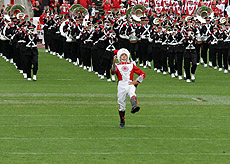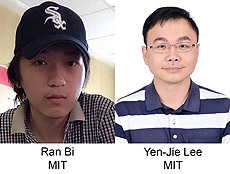LHC Run II: first analysis
 |
| If the individuals of a marching band can represent the large number of physics measurements that will come out of the LHC, one measurement must be first. Today's result is the drum major of LHC Run II physics measurements. |
It was Lao-Tzu who said, "A journey of a thousand miles begins with a single step." While this proverb from the Tao Te Ching is universally true, it has an especially apropos meaning for scientists working at the LHC. Our journey isn't always a physical one, but rather travels into intellectual realms never before investigated. We look to understand the behavior of matter at the highest energies ever achieved and to explore the conditions of the universe a tenth of a trillionth of a second after it began.
Our one-step-at-a-time approach served us well using the data recorded from 2010–12 (what scientists called LHC Run I), in which the Higgs boson was discovered, vast swaths of ideas for new theories were ruled out and the most energetic collisions ever achieved were characterized. This was an enormous success, leading to about 1,000 separate publications from the four big LHC experiments. During this period, scientists thoroughly explored the behavior of matter at collision energies of 7 and then 8 trillion electronvolts.
After two years downtime, the LHC resumed operations in 2015 (which we are calling Run II) and is now delivering beams of protons that collide at even higher energies, specifically 13 trillion electronvolts. There is no way to know what we will discover, as this is truly intellectual terra incognito.
As it happens, not all collisions occur with equal probability. Glancing collisions can occur a billion times more often than, for example, ones in which Higgs bosons are made. This allows scientists to quickly study certain data while waiting for enough data to accumulate for the rarer collisions. In addition, in the rarer collisions, two of the protons' constituents collide energetically, but the remainder experience only glancing interactions. Thus understanding the physics of glancing collisions is important even for events in which the discovery potential is much higher.
On July 21, CMS submitted for publication the first physics paper using the Run II data. The analysis studied the most common collisions to characterize both the number and direction of charged particles created in the collisions. Even in these gentlest of collisions, more than 20 charged particles are created on average. Further, it is always possible when exploring a new energy regime that surprises might arise, so the researchers compared their measurement to those taken at lower collision energies and observed no real surprises.
The real message is the LHC publication juggernaut has pounced on Run II data with a vengeance. This paper is the first, but it won't be the last.
—Don Lincoln
 |
| These U.S. CMS scientists made important contributions to this analysis. |
|